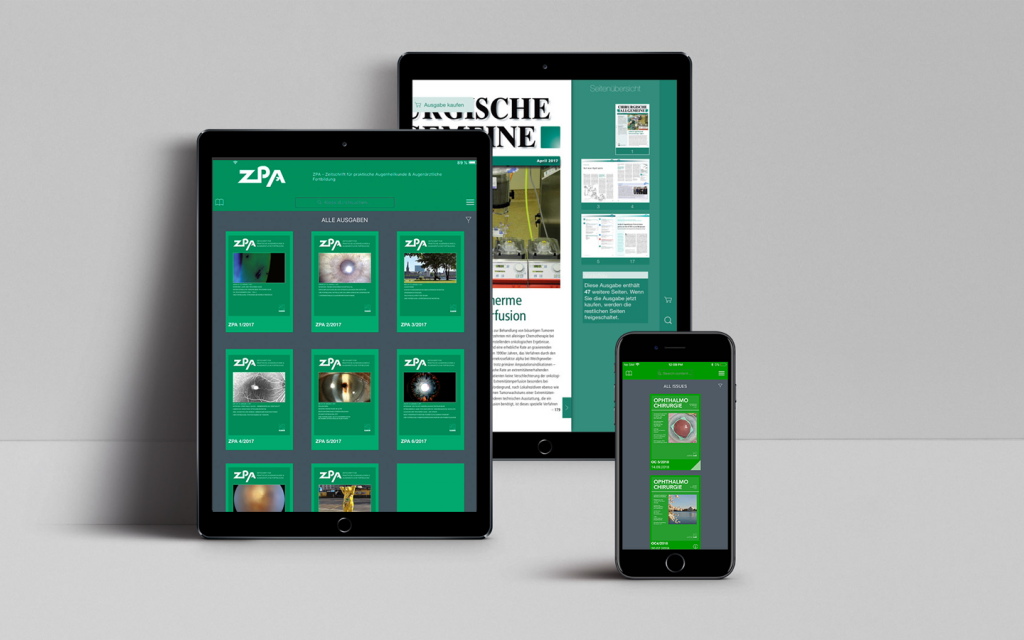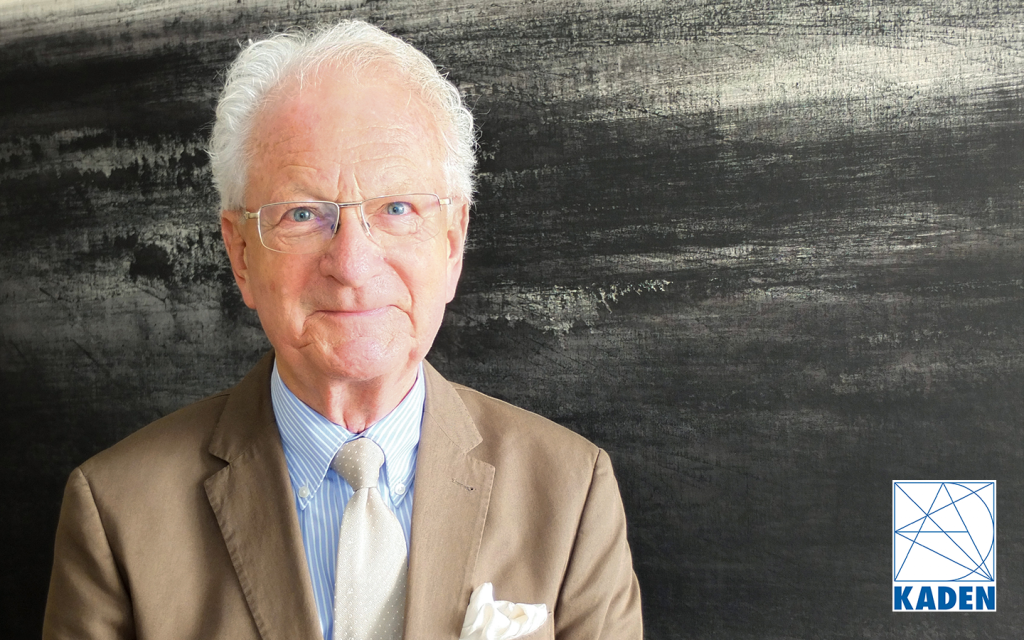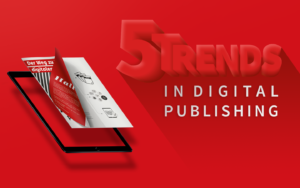Interview with Dr. Reinhard Kaden, founder and publisher of Kaden Verlag
When Dr. Reinhard Kaden founded the specialist publisher of the same name, he set himself the task of presenting the essentials of the practice of ophthalmology in a specialist magazine for German-speaking physicians. This new magazine concept by Kaden Verlag is still convincing and has expanded over the years to include further specialized journals, digital offers and CME training opportunities.
In this interview Reinhard Kaden talks about the new opportunities arising with digital media.
PressMatrix: Dr. Kaden, to start off can you give us a brief introduction to your publishing house and the magazines „ZPA – Zeitschrift für praktische Augenheilkunde & Augenärztliche Fortbildung“, “OPHTHALMO-CHIRURGIE”, and “CHIRURGISCHE ALLGEMEINE ZEITUNG” [“ZPA – Journal of Ophthalmology & Ophthalmology training”, “opthalmo-surgery” and “surgical general newspaper”]
Reinhard Kaden: I was still working at my opthalmologist practice in Heidelberg when I founded the Dr. med. Reinhard Kaden Verlag in 1980. My motto in all publications has always been “focus on the essentials”. I wanted to provide readers engaged in advanced professional training a medium with a primary focus on the current state of ophthalmological knowledge – this was the motivation behind my first journal, the „ZPA – Zeitschrift für praktische Augenheilkunde & Augenärztliche Fortbildung“. In addition to the training contributions, it provides news, information on professional policy, congress reports, and since 2005 also the CME [Continual Medical Education] courses that are so important to our readers in which the physicians can obtain the training credits they need through online training.
With the popularity of the ZPA amongst ophthalmologists and the emergence in the late 1980s of outpatient surgery in ophthalmology, it made sense to address this discipline in a specialist journal of its own – thus “OPHTHALMO-CHIRURGIE”was created, the only German-language journal targeted to the needs of operating ophthalmologists. Here too the training contributions are in the foreground, supplemented by video contributions, surveys among experienced operators, congress reports and much more.
In the year 2000, the new “CHIRURGISCHE ALLGEMEINE ZEITUNG” was published by Kaden Verlag for the first time, transferring our successful journal concept to surgery of all disciplines. Here, too, extensive medical training contributions, CME courses, and congress reports are central, complemented by a colourful range of current news and reports as well as a detailed column entitled “Personalia”.
PMX: What strategies and concepts are you pursuing with the magazines?
RK: We want to give the doctors – our readers – an overview of the current topics in their fields. They should be given the opportunity to stay abreast of developments and to continue their education. In the flood of information that flows to the doctors every day, we see ourselves as a “pre-sorter”, picking out the individual, current topics and preparing them in informative, well written articles. With the online training offered in the “ZPA” and the “CHIRURGISCHE ALLGEMEINE ZEITUNG” we also give readers the opportunity to purposefully convert the knowledge gained through the contributions into CME credit points – since 2004 the professional code requires that these be obtained on a regular basis.
PMX: How is the content of the magazines put together? Is there a permanent editorial team with specialists or do you rather acquire and coordinate external and guest authors?
RK: The journal is written by ophthalmologists and surgeons for ophthalmologists and surgeons. We have permanent editorial staff in the publishing house who are responsible for requests, editing, as well as the revision of the contributions we receive from external authors. Each one of our magazines has a specialized editorial team. These are supported by external editors, who come from the respective discipline. This, in combination with the contributions made by practising, experienced doctors guarantees the scientific quality and up-to-dateness of our magazines, which is our trademark.
PMX: What is the market for trade magazines like today and how do you think it will evolve over the next five years?
RK: It certainly won’t be easier. Generally speaking the status of reading has sunk somewhat, which is of course due to the variety of new media. At the same time, however, numerous surveys and statistics show that different rules apply to specialist magazines – here readers place great importance on accurate research and excellent editorial work and not on fast and superficial half-knowledge. It’s why I’m confident that the future prospects for trade magazines look good. This is also reflected in the stable subscriber numbers of our magazines. But of course you’ve got to incorporate the new opportunities offered by digital media and offer the reader the medium which they feel most comfortable with.
PMX: Since 2017 you’ve been offering three of the magazines in App form. What was the reason for choosing a digital solution and what challenges did the digital transformation have to overcome?
RK: Of course the publishing house must stay on its toes and keep a continual check on itself: Is our content up-to-date? What do our target groups want to read? But it’s also about new forms of presentation for our editorial content. Readers’ interests are increasingly oriented towards digital media, the possibility of being able to read at exactly that time and that place which happen to suit the individual. And so, for some, the classic print journal is no longer sufficient. With the app, we wanted to give the reader the possibility of reading the journal either exclusively digitally – “only” in the app – or as a complement to the print version for those who are interested in using both.

RK: Letters to the editor are rare for specialist magazines. We only carry out reader surveys at longer intervals. But from the stable subscription numbers and the fact that many readers keep their subscription even after retiring, we conclude the response to our magazine content is a positive one.
PMX: What other channels do you use to publish content? Do you follow different strategies on these channels?
RK: Of course, along with the magazines and the apps, we use our website to provide our readers with the latest news and services; for instance in the online journal, archive contributions can be downloaded – free for subscribers. In addition, we’ve had our own Facebook page for some time now, where we can reach a younger generation of doctors and so increase our reach and reputation. For both the ZPA and the “SURGICAL GENERAL NEWSPAPER” we also send e-mail newsletters. The ZPA newsletter , for instance, is addressed directly to assistant doctors and specifically geared to their concerns.
PMX: What experiences have you already had in digital publishing? What has worked and what has not?
RK: As I said we use several different channels – our website where users can find specific information and news, place orders for subscriptions or books, and also use the online training service. That’s well received. The Facebook page offers us the opportunity to look beyond our own backyard and gain further reach, establishing contacts with doctors and institutions through this more direct route. In addition, this medium has the charm of allowing us to directly receive reader reactions. We see directly who responds to what and how, what content is”liked” or shared by whom. The app now gives us the opportunity to add extra material to the content which readers of the printed edition also receive – links, videos, etc. This is an additional benefit which in our view is becoming ever more important and allows us to offer readers even more information and service.
PMX: Thanks for the interview!
In our PressMatrix interview series, publishers, entrepreneurs and experts talk about digital publishing. Read more about digital publishing for trade journals, special interest magazines, employee magazines and customer magazines.

